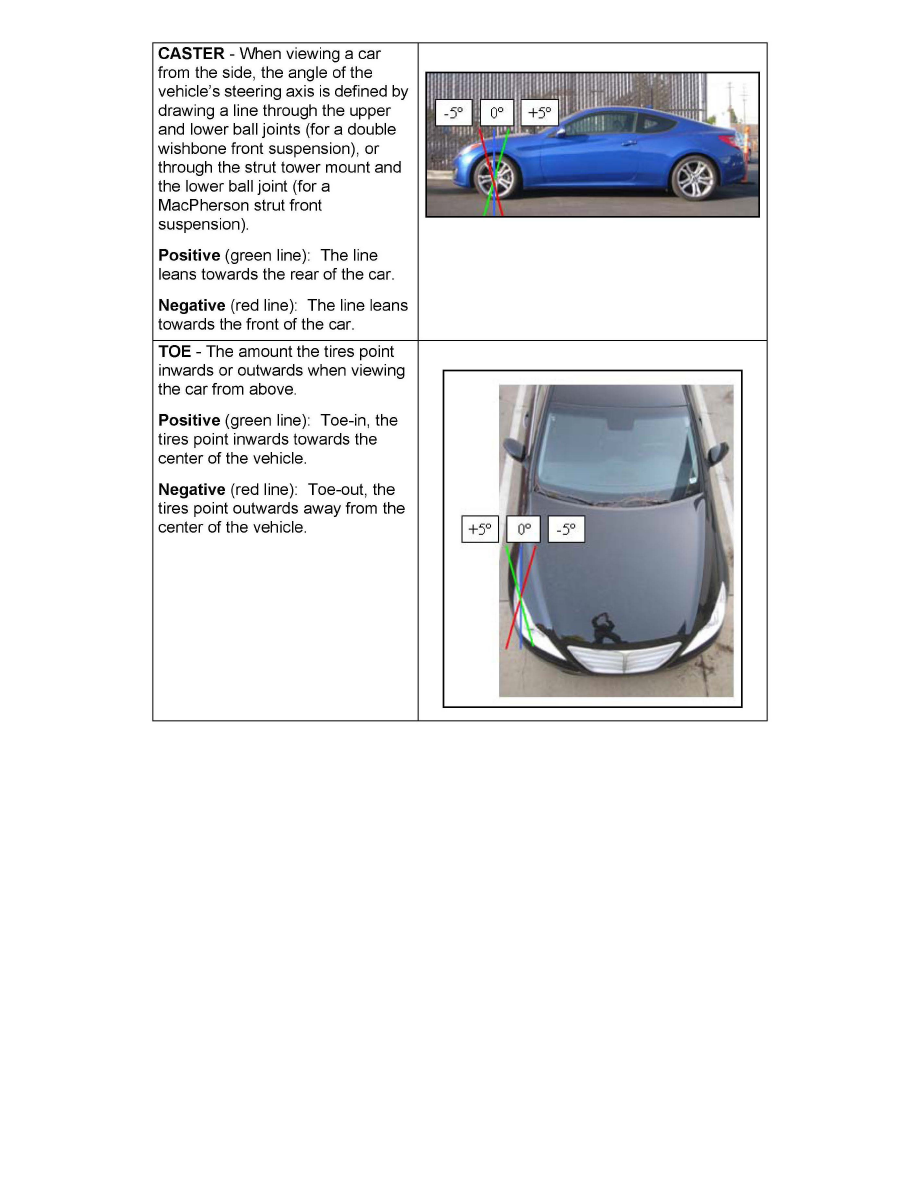Tucson FWD L4-2.4L (2011)

ALIGNMENT ANGLE DEFINITIONS
FACTORS THAT INFLUENCE VEHICLE DRIFT OR PULL
Vehicle drift or pull can be attributed to several factors. Understanding what can affect it is imperative for anyone repairing a vehicle with a drift or pull
condition. Most of these factors are directly measureable using tools commonly found in any repair shop like tire pressure gauges, alignment racks, and
wheel balancers.
1. Air pressure - Low front tire pressure can cause a vehicle to drift or pull towards that tire. Ensure that all tires are correctly inflated.
2. Alignment
a. Camber - A vehicle will drift or pull towards the side with more positive front camber. As a rule of thumb, the camber difference between the
front tires should be less than 0.5 degrees.
b. Caster - A vehicle will tend to drift or pull towards the side with less positive caster.
c. Steering Axis Inclination (SAI) - The angle formed by the line drawn through the steering pivot axis and a line at true vertical when viewed from
the front of the vehicle. SAI is designed into a vehicle's suspension and aids straight-line stability. This angle can be measured by the alignment
machine. For Hunter units, it is measured during the caster sweep process. It is useful for checking for damaged components when the SAI
difference between left and right sides is more than 1 degree. If SAI is lower on one side of the vehicle it may indicate a bent lower control arm.
If SAI is higher on one side of the vehicle it may indicate damage to the upper strut mount.
d. Thrust angle - This is the direction the rear axle is pointing as a result of the rear toe angles and results in the steering wheel being off-center. To
